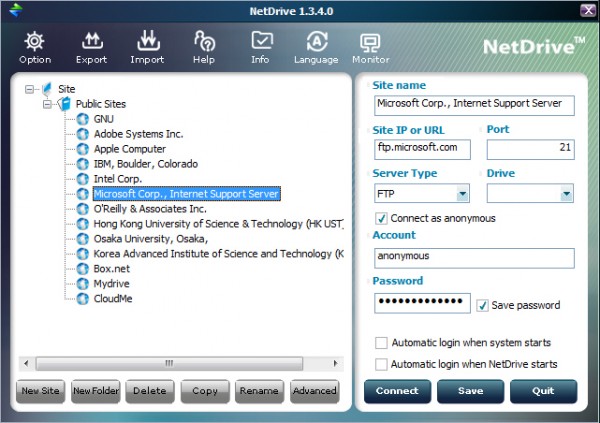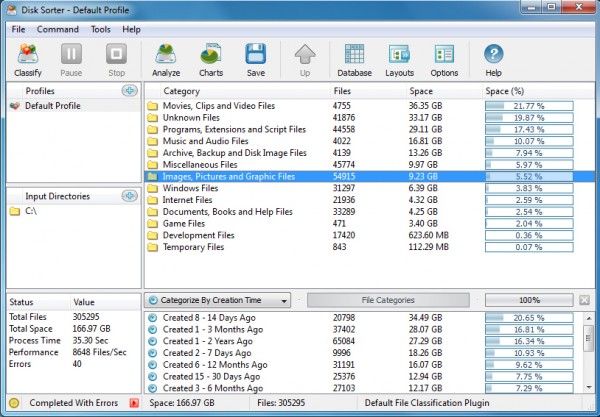
If you need to access an FTP server, perhaps to upload the latest version of your website, then you’ll probably reach for your favorite FTP client. But although that will transfer your files, it’s not exactly a convenient solution, particularly if you need to work with the server on a regular basis.
NetDrive is a free (for personal use) tool which can greatly simplify this process. If you find you’re frequently working with a particular FTP or WebDav server then the program can mount it as a new drive in Explorer, and you’ll be able to access it -- create, delete and rename folders, transfer and launch files -- just like any other drive on your system.
To help you get started, the program comes with a built-in library of public FTP servers (Box.net, Mydrive, Microsoft, Apple and more), each of which includes key details like the site name and type, port, user name and password. Choose the local drive letter you’d like to allocate to the server, click Connect, and an Explorer window will open at that site.
This works very well, too. Performance is unsurprisingly a big issue, and it’s hard to forget you’re accessing a remote site when it takes several seconds to do absolutely anything at all. But otherwise there’s nothing else to do, no special rules to learn or remember. You can drag and drop files, create folders, select and right-click items and use all the regular menu options, just as you always would -- very convenient.
It’s just as easy to add your own sites to the program. This works much like any bookmarking system, so if you’ve several sites then you can create multiple folders to help keep them organized. And you’ll then add individual sites to each folder, again starting with the basics: the URL, port, login details and so on.
You’re also able to customize each bookmark with a few key local elements, though. You can choose a local drive, for instance, to make sure it always uses the same one (important if you want to use the space as a backup destination, say). You can tell NetDrive not to save the site password, perhaps useful for security. And you can optionally set up NetDrive to automatically log on to these sites when the system starts, which means you may never have to worry about these low-level details again.
And when you’ve finished, you can explicitly close the connection by clicking the Disconnect button within NetDrive, or just close your system as usual and the program will handle this automatically.
We did run into one issue here. After a hard testing session, opening and closing multiple servers, allocating and deallocating a host of different drive letters, the program just stopped working. Every time we tried to connect a new drive it complained of initialization problems, recommending that we reinstall if they continued.
This did only happen once, though, after we had intentionally tried to push the program to its limits. Rebooting fixed the problem immediately, and in more standard use NetDrive worked just fine, delivering simple and straightforward Explorer-based access to all our test FTP servers.



![]() Little over four weeks ago, during an earnings conference call, departing Microsoft CFO Peter Klein revealed the software giant is working with OEMs on smaller and cheaper Windows tablets. The new fondleslabs are expected to be available in the coming months, but Acer decided to give itself a head start.
Little over four weeks ago, during an earnings conference call, departing Microsoft CFO Peter Klein revealed the software giant is working with OEMs on smaller and cheaper Windows tablets. The new fondleslabs are expected to be available in the coming months, but Acer decided to give itself a head start.


